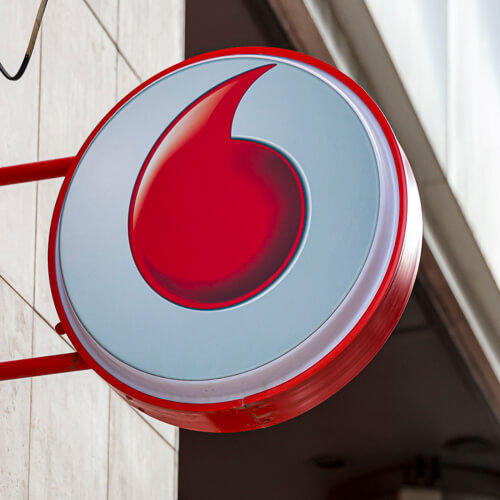Vivek Badrinath indicates recent deals with infrastructure investors do not preclude further combinations.

Vodafone Group only recently revealed its partners of choice for towerco Vantage Towers, agreeing to a tie-up with Global Infrastructure Partners (GIP) and KKR, and – like rival Deutsche Telekom (DT) – eschewing a merger with an industry player such as Cellnex.
However, Vivek Badrinath, CEO of Vantage Towers, indicated that the freshly minted tower deals "do not preclude further combinations" of European tower companies. In an earnings call for Vantage Towers, Badrinath said "the game is still on" in terms of potential consolidation.
Indeed, he described GIP and KKR as strong, infrastructure-focused players "who obviously have a view that the European market is going to consolidate and that they could be part of it. It leaves quite a few doors open for the future."
Currently, there are five large-scale tower players in Europe: American Tower Company (ATC), Cellnex, DT's GD Towers, Orange's Totem, and Vantage Towers. In recent years, Vodafone Group CEO Nick Read has predicted that the region will end up with three large players in the tower market.
Figure 1:  (Source: l_martinez/Alamy Stock Photo)
(Source: l_martinez/Alamy Stock Photo)
Noting that some modeling was done several months ago on how companies such as GD Towers, Totem and Vantage Towers could be combined, Badrinath observed that the proposed change in the Vantage Towers' ownership structure will also "probably force people to go back to the drawing board on what shape or form such a combination will take ... Investors have said that they still see consolidation in the European power sector as something relevant."
Smaller in-country tower companies are also still in action, including Vantage Towers' co-controlled companies Inwit in Italy and Cornerstone in the UK. Badrinath was unable to confirm or deny speculation that Vantage Towers could also buy the 50% share of Cornerstone that it doesn't already own. Virgin Media O2, a joint venture of Liberty Global and Telefónica, holds the other 50% stake.
"We continue to believe as a management team that it is a relevant asset for us and that consolidating Cornerstone would be a good step for Vantage Towers," he said.
Step-by-step progress with 1&1
Otherwise, Badrinath appeared broadly pleased with Vantage Towers' performance in the six months to the end of September 2022, highlighting in particular that the company was able to accelerate its construction of macro sites despite the difficult operating environment.
In the second quarter of the 2023 fiscal year (FY23), Vantage built 260 sites compared to 140 in Q1. Of the total 400 sites built in the first six months, Germany accounted for 260. The towerco also gained 710 net new tenancies in the first half and reached a tenancy ratio of 1.45x. The medium-term goal is to achieve a tenancy ratio of above 1.5x.
Meanwhile, Badrinath did not directly address the fact that German operator 1&1 has blamed Vantage Towers for delays in the rollout of its 5G network. However, he did make a point of noting that the supplier "will further invest in the acceleration of the built-to-suit programme and the 1&1 rollout" in the second half of FY23.
Vantage Towers has previously indicated that it expects to invest 10 million to 15 million euros (US$10.3 million to $15.5 million) in FY23 to ramp up the build-to-suit program, facilitate 1&1's access on existing sites and build up supporting teams.
Badrinath added that the towerco is investing resources and working actively with 1&1. "It's a new program for everybody in the chain. We're getting lots of things sorted out step by step," he said.
Seeing white spots
Also worth noting are Badrinath's comments about the 2019 agreement by DT, Telefónica Deutschland (O2) and Vodafone Germany to eliminate 6,000 so-called "white spots" – areas where there is no 4G mobile coverage at all – in Germany by 2024.
Telefónica Deutschland CEO Markus Haas recently indicated that the three mobile network operators (MNOs) are now mulling changes to the white spot approach that could see them adopt "grey spot technology" in those zones – in other words, moving to active from passive network sharing.
Haas further indicated that the MNOs might not need to build all 6,000 towers (2,000 per operator) to eliminate the white spots because of progress made with individual network rollouts.
Want to know more? Sign up to get our dedicated newsletters direct to your inbox.
Vantage Towers is responsible for building Vodafone Germany's 2,000 towers, which in turn form part of the supplier's commitment to build 7,100 new towers across all of its markets over five years. As far as Badrinath is concerned, there has been no major change of direction in regard to the white spot program. As he pointed out, the project is tracked very carefully by the German regulator.
Related posts:
— Anne Morris, contributing editor, special to Light Reading
Read more about:
EuropeAbout the Author(s)
You May Also Like











